Iron Man JT: The Jeep Gladiator That Does it All
Perfection. Some say its pursuit is a fools errand. Others spend their entire lives chasing it. But what makes something truly perfect? More specifically, what makes the perfect vehicle? It may seem like a rhetorical question, but it’s one that many off-roaders struggle to agree on. Practicality vs aesthetics. Specialization vs versatility. Performance vs reliability. The debate goes on. But what if there were no compromises? What if you could build one vehicle to check all the boxes?
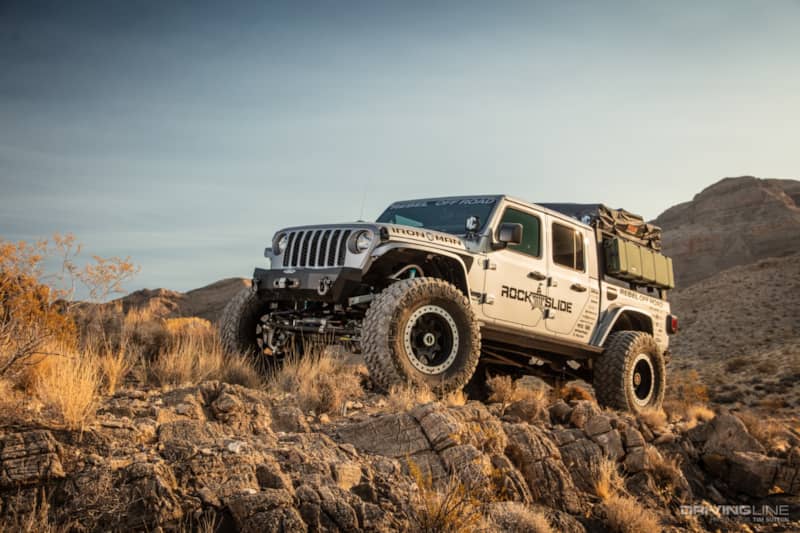
That’s exactly the question Taylor Blagdon of Lake Forest, California found himself asking in late 2018. As the Sales Manager for Rebel Off Road, one of the nation’s premier Jeep builders, and a veteran Jeeper himself, Taylor saw a new realm of possibility with the release of the long-awaited 2020 Jeep Gladiator. Details of the new platform began to emerge, erasing any obscurity of its components and design. The rumors were settled, and much to the satisfaction of both seasoned off-roaders and prospective newbies. It was obvious Jeep had listened to their consumer base and delivered upon their needs. Riding on the coattails of the JL Wrangler’s success, the Gladiator offered nearly every benefit its SUV-counterpart is revered for, and then took it a step further with a truck bed. Opening itself up to a whole new crowd, the crew-cab pickup showed incredible potential to be quite literally anything its owner wanted it to be. For Taylor, this meant his new Gladiator could be the same capable rock crawler his JK was, and the ultimate overland rig with the ability to carry the extra cargo necessary to adventure anywhere for days on end.
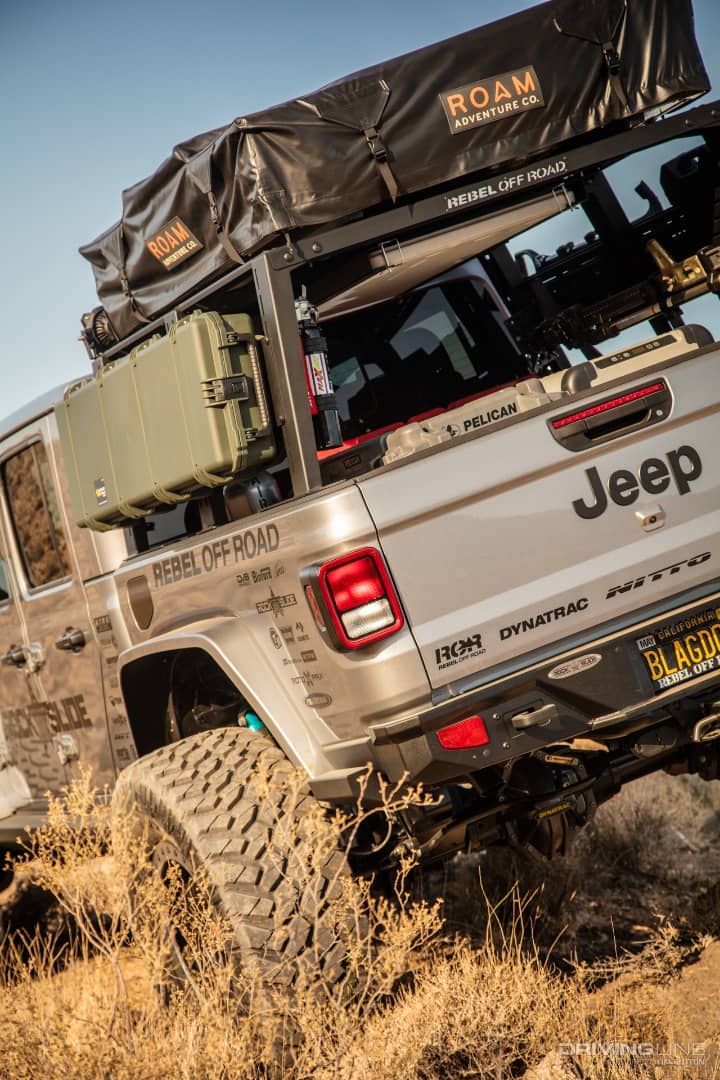
Taylor didn’t waste any time. For years, his current build, Iron Man JK, was the hallmark of 4-door Jeep JKs, built for crawling performance while still proving reliable and sane. But for a new build to begin, the JK had to go. After selling his beloved Iron Man, Taylor ordered himself a 2020 Jeep Gladiator Sport and quickly put together a full build list, as he does for each of his customers, taking careful consideration of what components will work best together to achieve one ultimate goal. The parts began to roll in even before Taylor took delivery of the new truck. But, to truly appreciate the benefit of completely outfitting a new Jeep build, one must know its capability in stock form. Just days after being handed the keys to his new Gladiator, Taylor found himself in the Eastern Sierras, pitching the bone-stock JT on some rocks along the trails near Mammoth Lakes, learning its strengths and weaknesses, taking notes along the way. But this factory-form Jeep wouldn’t stay that way much longer.
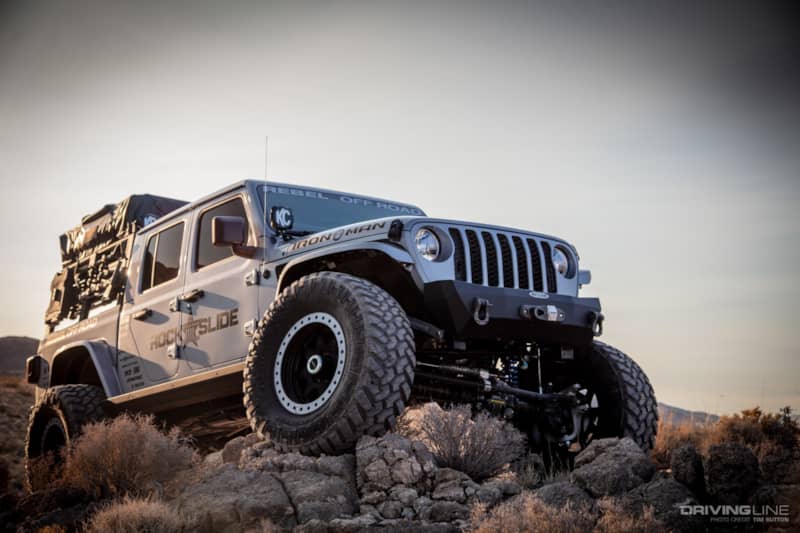
Armed with a team of specialized Jeep technicians at Rebel, and Taylor’s experience in putting together an outstanding build, the boys got to work on project “Iron Man JT.” Starting with the core drivetrain components, the factory Jeep axles were on the chopping block. Although the Gladiator comes with a front Dana 44 axle in all trim levels unlike the Wrangler, Taylor’s plans required larger axles with more beef to them. Installing a pair of Dynatrac one-ton axles on the Jeep (XD60 front, ProRock 80 rear) provides the peace of mind when wheeling with larger tires. Bigger axles mean bigger ring and pinions, larger tube diameters, bigger axle shafts with greater spline counts, and a wider stance. All benefits to any formidable crawler build.
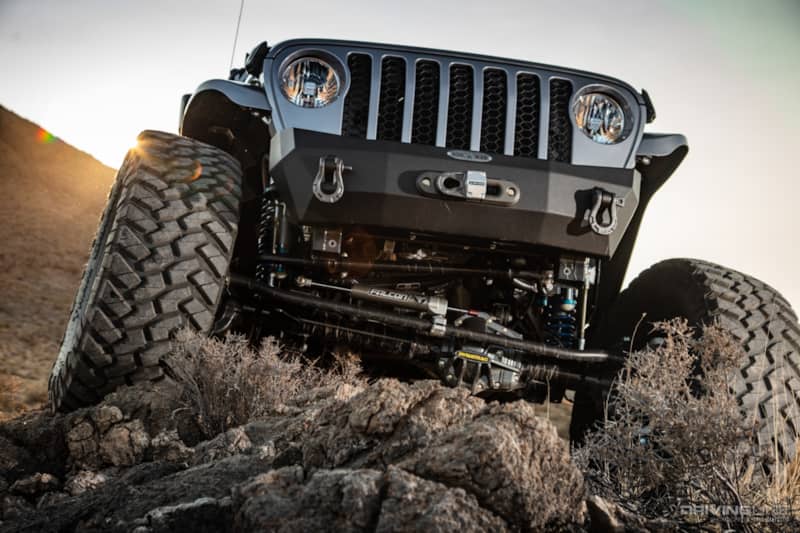
But these big axles come with a cost. The added unsprung weight of the one-tons meant the Gladiators suspension needed to be addressed, and we’re not talking about some spacer lift either. Taylor opted for the Recon Front Coilover Conversion kit, one of Rebel Off Road’s staple Jeep products, made in-house utilizing King 2.5” shocks in all four corners. The Recon kit allows for a comfortable ride both on and off-road, better handling, ride-height adjustability and of course, better suspension articulation. Paired with the coilover conversion is a set of Teraflex Suspensions Alpine IR front control arms, which are adjustable to yield a greater caster angle for a proper alignment. While the rear control arms are still stock, Taylor plans to upgrade both ends of the Jeep to a long-arm system as parts become available. Keeping the Gladiator stable on the road, yet still flexy on the rocks is a RockJock4x4 Antirock sway bar system.
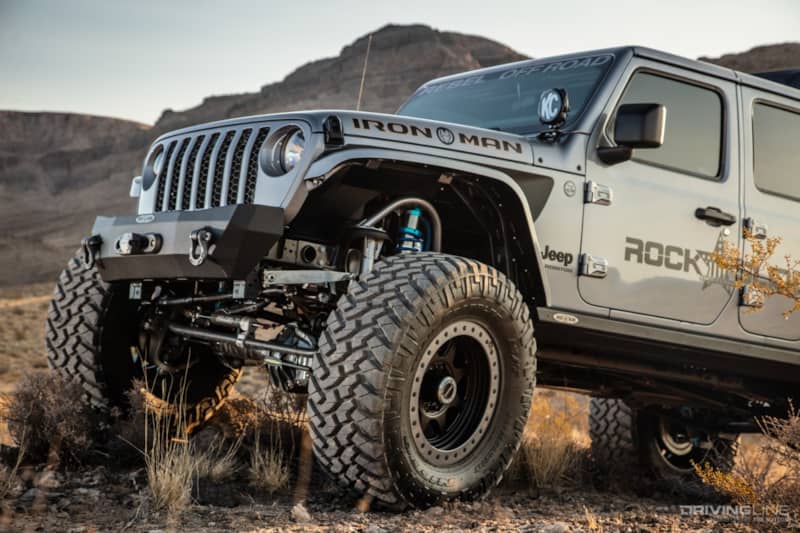
For Taylor, having the right tires on his rig isn’t just a matter of preference. He must be able to trust his tires to get him on and off the grid safely and without incident. Having installed hundreds of them on customer rigs over the years, Nitto Trail Grapplers were the obvious choice for Taylor. The 40x15.50R20 Trail Grappler fits with ease in the Jeep’s fender wells with a modest 3.5 inches of lift (another advantage the Gladiator has over any other truck in its class). All of Iron Man JT’s drivetrain was built to yield the maximum performance from these tires safely, so having them on the build influenced much of the grand design. Keeping in the air is a set of Trail Ready HD20 beadlock wheels, which have been proven on hardcore off-road vehicles for years. “I ran 40x13.50R17s on my JK, but being that the Gladiator is a truck with a longer wheelbase and more spread out, I think it can easily rock the 20-inch wheels on 40-inch tires no problem. And with a 15.5-inch wide tire, traction is far from my concern,” said Taylor.
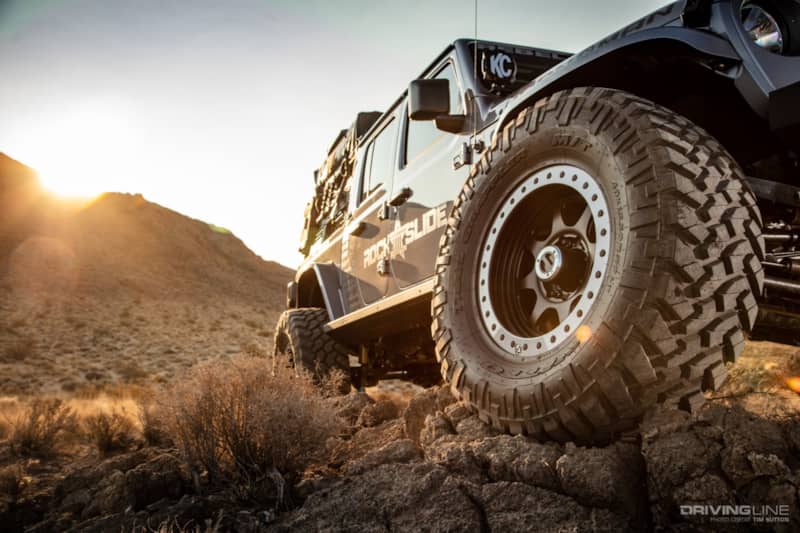
Once the running gear was installed and completed, he then moved on to modifying the exterior of the JT. The stock hood, fenders and bumpers were next on the chopping block, replaced with more functional aftermarket counterparts. A DV8 Offroad Rubicon style hood was installed, for added ventilation and a tougher look. As with Taylor’s JK build, a set of paint-matched Nemesis Industries fenders were utilized for a sleek, yet functional profile. These aluminum fenders are lightweight, allow for full articulation of the 40-inch Trail Grapplers, and can take a beating.
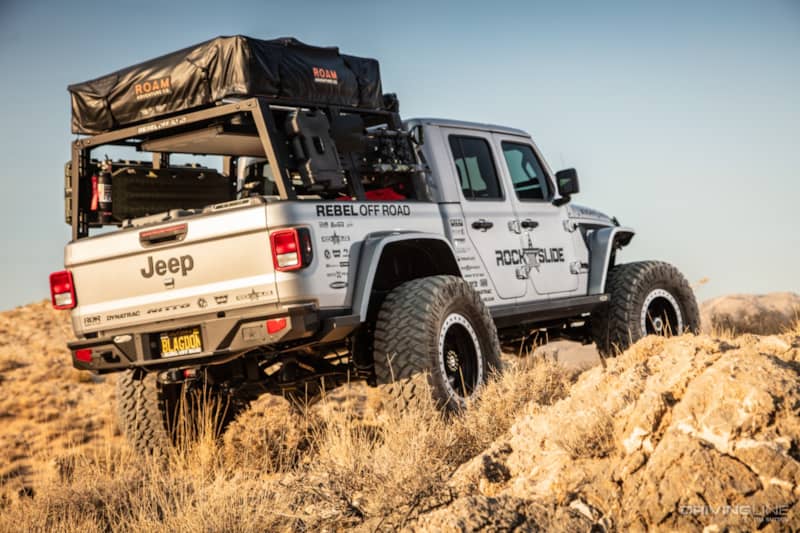
Taylor teamed up with Rock-Slide Engineering for the other bits of armor on Iron Man JT. The RSE front bumper offers a narrow-width design, capable of housing a Warn Zeon 12-S winch, with recovery points, and a skid plate below it to protect the important steering components above the front axle. The RSE rear bumper is a first of its kind, made specifically for the Gladiator. It retains the Jeep’s towing capacity, retains the factory Gladiator reflectors, can be used a step to get into the bed, all while allowing for the best possible departure angle. Not much more you can ask from a rear bumper! Taylor is also running a set of their step sliders, which is the product that put RSE on the map. These innovative rock sliders house a flush-mounted step that is actuated to swing down when the doors are opened, allowing for a safe and easy entry and exit from the Jeep. A must-have item for anyone running a lift and big tires.

Up to this point, Taylor had been in familiar territory. Building the front half and suspension on the Gladiator was just like building a Wrangler. But the one component that sets the Gladiator apart, its bed, was uncharted territory for the aftermarket. While the Gladiator has a similar bed to its competitors, few direct-fit aftermarket items existed for it during the build. This aided in the development of Rebel Off Road’s latest production part, the XPLOR Bed Rack system for the Jeep Gladiator. Utilizing the factory bed rails, the XPLOR rack was an easy way to add a ton of versatility to the bed of Iron Man JT. Allowing for infinite mounting options along both sides of the rack, and on top, the bed rack also gave Taylor a place to mount his Roam Adventure Co. roof top tent. With a few RotoPax fuel and storage cans bolted to the side, a Krazy Beaver shovel, Hi-Lift jack and various other outdoor tools, Taylor’s Jeep is ready to take on anything.
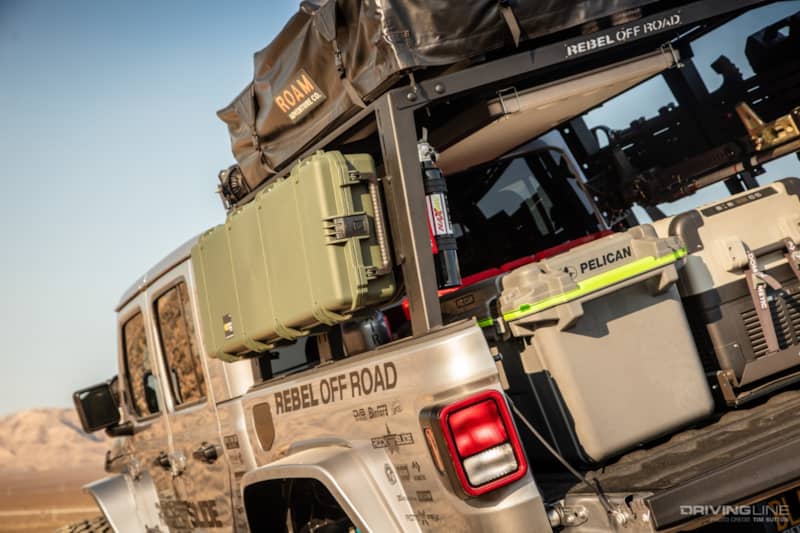
And that’s the beauty of the Jeep platform. Unlike some of the other mid-size trucks on the market, the Gladiator carries a heritage of being one of the most customizable vehicles on 4 wheels. Some of the other accessories Taylor has installed include a Rock Hard 4x4 sport cage, KC HiLites LED headlights, A-pillar lights and Pro 6 light rack on the roof, ARB 50-quart fridge freezer with a Rebel Off Road XPLOR fridge slide in the bed, Powertank 15 lbs CO2 tank and Pelican storage cases. All part of the grand design, to be the most versatile and functional Jeep Taylor could build.
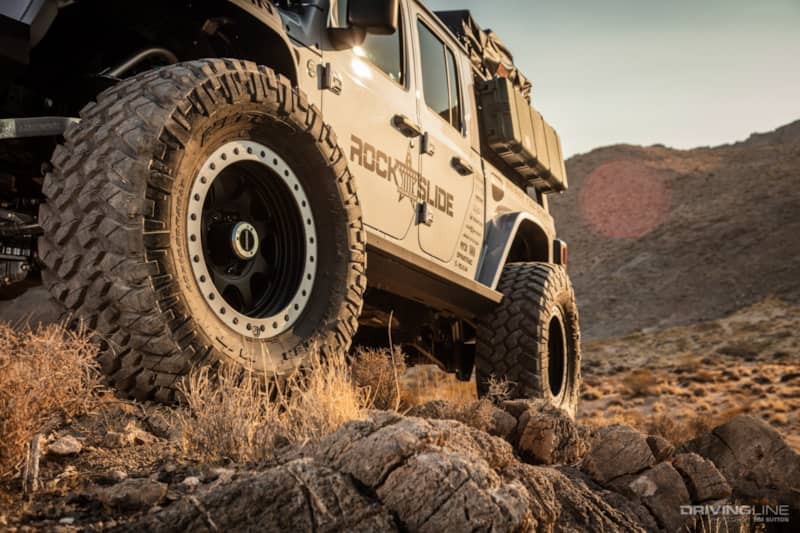
Before the Gladiator platform hit the streets, building a mid-size truck that could drive you to work, rock crawl the iconic areas of North America such as the Rubicon or Moab and still carry the necessary cargo for a several day excursion across vast expanses was a tall order. Running 40-inch tires on a mid-size pickup without heavy cutting was nearly impossible. Not to mention the lack of availability in aftermarket parts for such a build. And even if you could manage to solve for all these obstacles, the final product would undoubtedly be cost-prohibitive for the average off-road enthusiast.
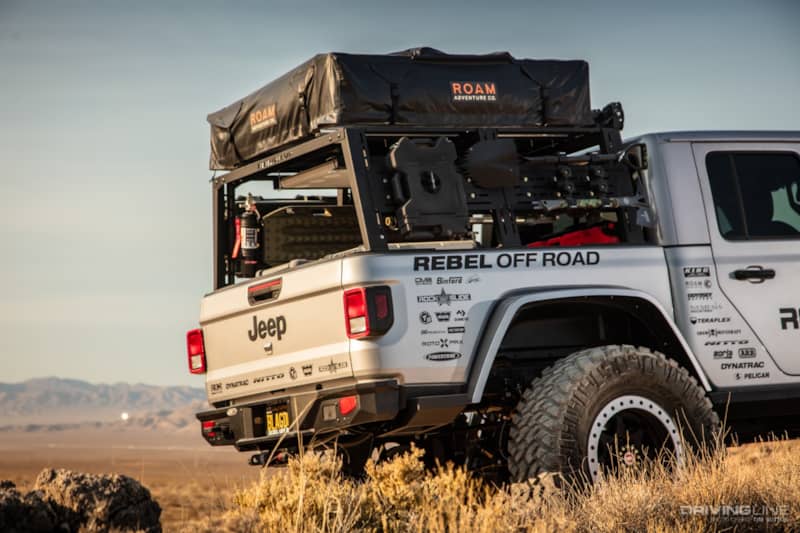
Which is why the Gladiator is the perfect platform for adventure seekers like Taylor who see more in their 4x4 than a single purpose. Cliche as it may be, Iron Man JT really does have the best of both (if not all) worlds, and it certainly didn’t take a team of rocket scientists to achieve that. Taylor’s build is one of the earliest examples that demonstrate how with a little careful part selection, the Jeep Gladiator is the perfect blend of form and function. Perhaps most importantly, it’s an inspiration to the many off-roaders out there who, for so long, were forced to make compromises when building their dream 4x4. And if no other statement can be drawn from Iron Man JT, it’s that those days of compromise are far behind us.
Don't miss the in-depth walk-around video of Iron Man JT with Taylor himself!







